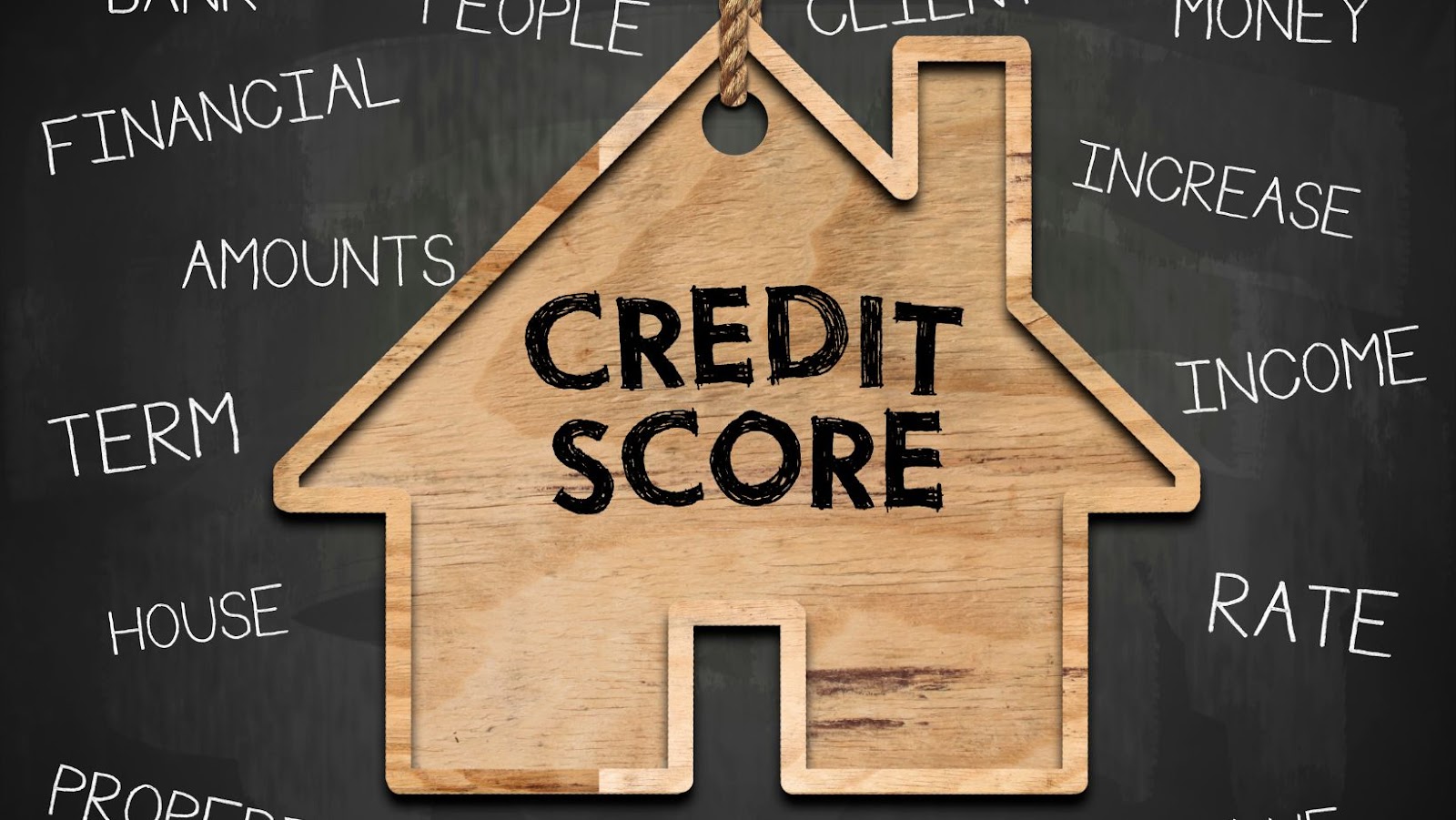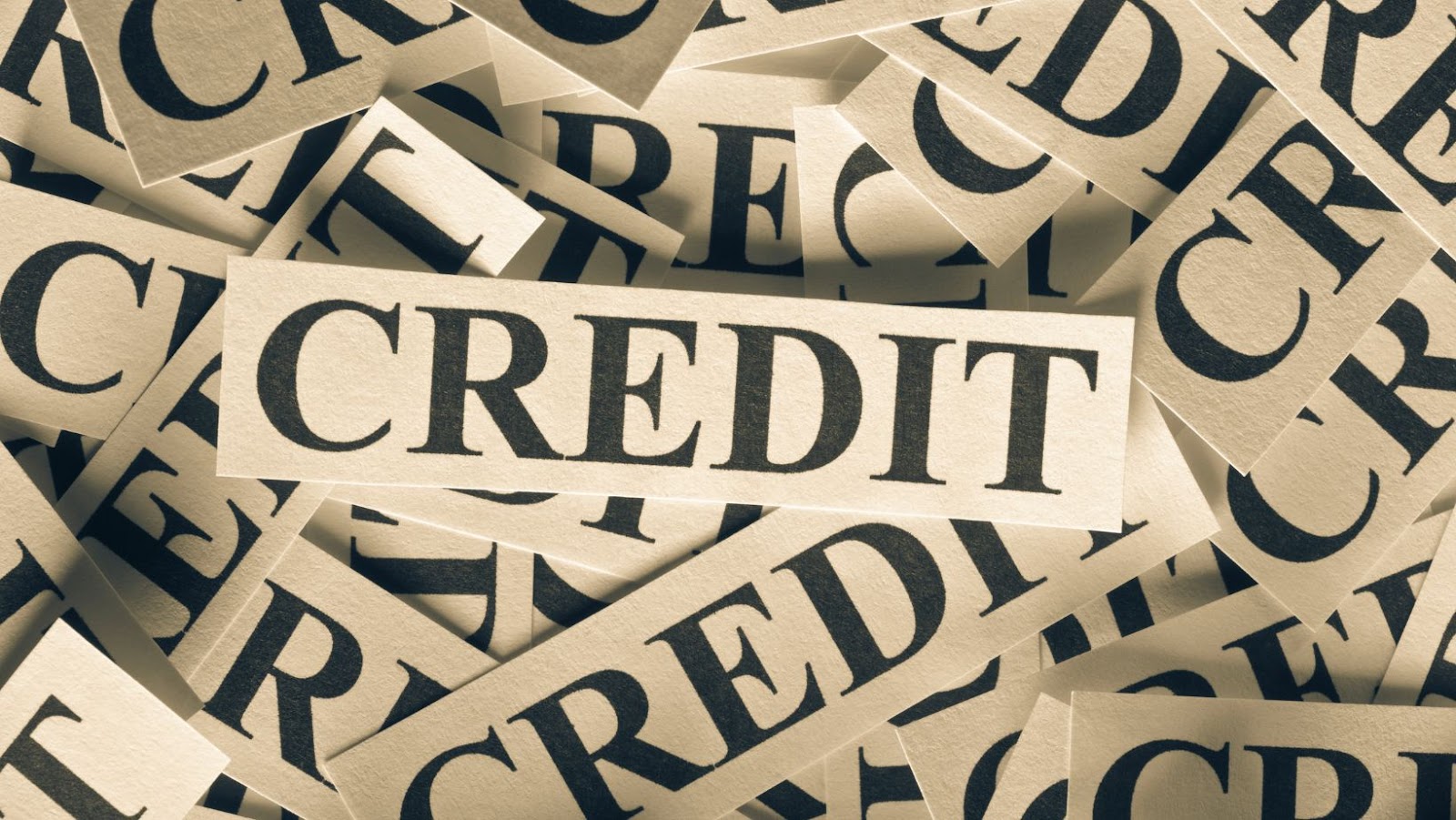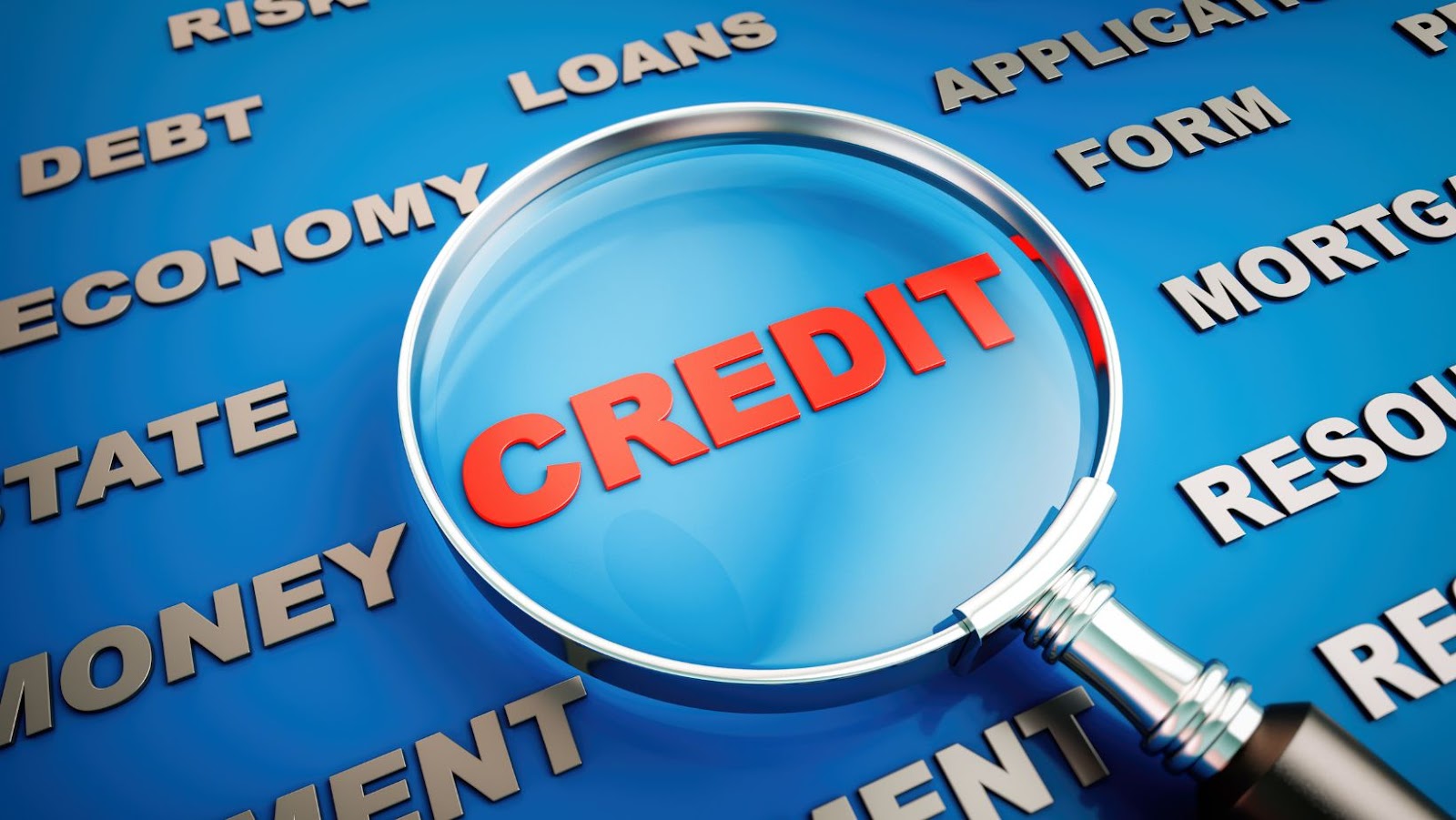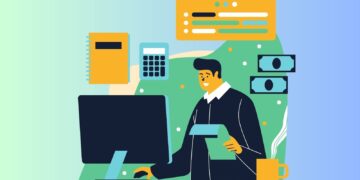Understanding the different types of credit is a critical step in becoming a financially literate consumer. Knowing what kind of credit you’re using, and how it works, can help you make better financial decisions.
This article will provide a detailed look at the different types of credit, which involve repaying different amounts each month, depending on your activity.
Explaining Credit Score And How It’s Calculated
The credit score is a numerical representation of your creditworthiness, calculated based on your credit history. It measures how likely you are to repay the money you owe and the risk you pose to lenders.
The credit score is calculated using several factors, including the payment history, credit utilization, credit age, credit mix, and recent inquiries. Different credit bureaus may use slightly different formulas to calculate credit scores. A good credit score is usually above 700, while a poor credit score is below 600.
Revolving credit and installment credit are the two main types of credit. Revolving credit involves paying back different monthly amounts, such as credit cards, based on your credit activity. On the other hand, installation credit involves repaying a fixed amount each month and includes loans like car loans and mortgages. Therefore, maintaining a good credit score by making timely payments and keeping your credit utilization low is essential.
Which Types Of Credit Involve Repaying Different Amounts Each Month, Depending On Your Activity?
Revolving credit and some installment credit involve repaying different monthly amounts, depending on your activity.
Revolving credit includes credit cards and lines of credit that allow you to borrow up to a certain limit and repay the borrowed amount plus interest over time. You can use the credit as needed and have flexibility in your payments, such as paying the minimum amount due or more to reduce your balance.
Installment credit includes loans for big-ticket items like cars, homes, and student loans. Some types of installment credit, such as adjustable-rate mortgages and home equity lines of credit, have changing payments depending on interest rates and loan balances.
To fully understand the different types of credit, it’s important to read the terms and conditions carefully and ask questions before taking on any new debt. In addition, make sure you know the interest rate, repayment terms, and any fees associated with the credit.

Importance Of Good Credit Score
The importance of a good credit score cannot be overstated. A credit score is a measure of your creditworthiness, and it plays a critical role in your financial life. For example, a good credit score can be the difference between getting approved for a loan or credit card and getting declined. It can also affect the interest rate you are eligible for, which can save or cost you thousands of dollars over the life of a loan.
Understanding different types of credit is also vital in managing and improving your credit score. Revolving credit, which involves repaying different amounts each month depending on your activity, is one such type of credit. Credit cards are the most common form of revolving credit, and the amount owed can fluctuate depending on how much you charge, pay, and the interest rate applied to the balance.
Understanding your credit and the different credit types available for maximizing your score and ensuring financial stability is crucial.
Pro Tip: Paying off revolving credit on time can positively impact your credit score and show lenders that you are a responsible borrower.
Types Of Credit
Credit is an important part of the economy, and many different types of credit are available.
Different types of credit involve repaying different amounts each month, depending on your activity, such as interest rates, the loan length, and the loan amount.
Let’s take a closer look at the different types of credit and how they each involve different amounts to be paid monthly.
Revolving Credit
Revolving credit allows borrowers to access funds up to a certain credit limit and repay those funds at variable amounts each month based on their spending activity. This type of credit is ideal for those who need flexibility in their borrowing and can maintain responsible credit utilization.
Several types of credit involve repaying different amounts each month, depending on your activity. These include:
Type – Description
Credit cards
A revolving line of credit that allows you to borrow up to a certain limit and pay back the borrowed amount each month with varying interest rates.
Home equity lines of credit (HELOCs)
A revolving line of credit allows you to borrow against the equity in your home and pay back the borrowed amount with variable interest rates.
Personal lines of credit (PLOCs)
A revolving line of credit allows you to borrow up to a certain limit and pay back the borrowed amount with variable interest rates.
Revolving credit offers great flexibility, but it also requires careful financial management to avoid overspending and debt. Remember to make timely payments and stay within your credit limit to maintain a healthy credit score.
Definition and Features
When it comes to credit, there are several types that consumers can utilize. Revolving and installment credit are two primary types of credit, each with its features and repayment structures.
Type of Credit – Features
Repayment Structure
Revolving Credit
Borrow up to certain limit
Consistent source of credit
Repay borrowed amount each month
Installment Credit
Borrow specific amount
Higher interest rates
Repay over time through regular installments
Depending on your specific financial situation, one type of credit may be more advantageous than the other, so it’s essential to understand the differences before deciding.
Repayment Amount Flexibility
Some types of credit, such as credit cards and lines of credit, offer repayment amount flexibility where the amount you owe and pay each month depends on your activity.
Credit Cards – With credit cards, you can pay the minimum amount due each month, a fixed amount or the full statement balance. However, the minimum amount may not be enough to pay off your debt or may result in paying more interest over time.
Lines of Credit – Similar to credit cards, lines of credit offer flexibility in repayment amounts. You can make interest-only payments, repay a percentage of the principal, or repay the full amount. However, like credit cards, making small payments may result in a larger balance and more interest.
Personal Loans and Car Loans – These types of credit involve fixed monthly payments that amortize the total amount borrowed over a set term. The monthly repayment amount stays unchanged unless you prepay or defer payments.
Understanding the different types of credit and their flexibility with repayment amounts can help you make informed borrowing decisions that align with your financial goals.
Examples of Revolving Credit
Some examples of revolving credit include credit cards, home equity lines of credit (HELOCs), and personal lines of credit. These types of credit allow you to borrow money as needed, up to a certain credit limit, and repay different amounts each month based on your activity.
Credit cards:
This is the most common type of revolving credit. It allows you to make purchases up to your credit limit and pay them off over time, with interest.
Home equity lines of credit (HELOCs):
The equity in your home secures this type of revolving credit. You can borrow funds as needed, up to your credit limit, and repay them over time.
Personal lines of credit:
This type of credit is unsecured, meaning it does not require collateral. Instead, you can use the funds up to your credit limit and repay them over time with interest.

Installment Credit
Installment credit is a type of credit that involves repaying a fixed amount of money in regular installments over a set period. This type of credit involves repaying the same amount each month, no matter how much you use.
Some common examples of installment credit include mortgages, car loans, and personal loans.
The opposite of installment credit is revolving credit, which involves repaying different monthly amounts depending on your spending. Examples of revolving credit include credit cards and lines of credit.
Understanding the different types of credit is important to make informed decisions about your borrowing and use credit responsibly.
Pro tip: When taking out installment credit, compare rates and terms from multiple lenders to ensure you get the best deal.
Definition and Features
Credit is an arrangement where a lender provides funds to a borrower for a specific period, agreeing to repay the borrowed amount and interest. There are several types of credit, including revolving credit and installment credit.
Revolving credit involves a credit limit; the borrower can borrow up to the limit, repay it, and then borrow again. The minimum repayment amount varies each month and depends on the outstanding balance.
Installment credit involves borrowing a specific amount for a specific purpose, such as a car loan or a mortgage. The borrower repays the loan in fixed monthly amounts until the loan is fully repaid. These payments remain the same monthly, regardless of the borrower’s activity.
Understanding the different types of credit available can help you make informed decisions about borrowing money, ensuring you choose the right type based on your financial needs and goals.
Fixed Repayment Amount
Understanding different types of credit is crucial to manage your finances effectively.
Fixed Repayment Amount is a type of credit where you must repay a predetermined amount every month, regardless of your usage or activity. This repayment amount is typically decided upon when you apply for the credit, and it will remain the same throughout the life of the loan. This type of credit is commonly used for car loans, personal loans, and mortgages.
The benefit of a fixed repayment amount is that you can easily budget your monthly payments, providing certainty and stability to your financial planning. However, it may not suit everyone’s needs as some people might want to pay more or less at different times.
It’s essential to understand the different types of credit and choose the one that’s best for your needs to control your finances. Pro Tip: It’s always advisable to compare credit options thoroughly before deciding.
Examples of Installment Credit
Installment credit is a type of credit that allows borrowers to repay a fixed amount of money each month until the loan is paid in full. Here are three common examples of installment credit:
Type of Credit – Description
Mortgages
A loan used to purchase a home. Borrowers make fixed monthly payments to repay the loan throughout 15 to 30 years.
Car loans
An installment loan used to purchase a vehicle. Borrowers repay the loan for 3 to 7 years, making monthly fixed payments.
Student loans
Used to pay for educational expenses such as tuition, room, and board. Borrowers make fixed payments each month throughout 10 to 25 years.
It is important to understand different types of credit and which ones involve repaying different amounts each month as it helps the borrower plan and manage their finances better. By knowing the types of credit, borrowers can select the right product that suits their financial needs and manage their repayments more efficiently.
Pro tip: Before taking on any type of credit, it is important to read and understand the terms and conditions carefully, including the interest rate, fees, repayment period and requirements, and penalties for late payments to avoid any financial pitfalls.

Secured Credit
Secured credit is a type of credit that involves collateral, typically in the form of an asset, that is used to secure the loan. Understanding different types of credit is essential when choosing the right credit option that suits your financial goals and lifestyle.
Some types of credit involve repaying different amounts each month, depending on your activity, which are:
Credit Type – Description
Revolving Credit
Revolving credit is an open line of credit that allows a borrower to borrow up to a particular limit, repay the debt, and then borrow again. The monthly payments differ depending on the amount borrowed.
Lines of Credit
A line of credit is a flexible loan arrangement that allows borrowers to access funds up to a specific credit limit. Monthly payments will depend on the amount borrowed.
Home Equity Line of Credit (HELOC)
A Home Equity Line of Credit (HELOC) allows a borrower to tap into their home’s equity, using it as collateral to get a revolving line of credit. Monthly payments depend on the borrower’s borrowing activity.
It’s important to choose a credit type that matches your needs while considering your financial situation.
Pro Tip: Always remember to pay your credit on time to maintain a good credit score.
Definition and Features
There are two main types of credit based on how you repay the amounts each month – Revolving Credit and Installment Credit.
Revolving Credit – You are given access to a specific amount of credit in revolving credit. You can use the credit as and when you need it, and you only have to repay the amount of credit you use with interest. You can continue using the credit if you keep repaying it within your credit limit.
Installment Credit – In installment credit, you borrow a fixed amount of money for a specific term with fixed payments at regular intervals until the end of the term, which includes both principal and interest. Once the term is over, the credit is fully repaid.
Example: Credit cards, Home equity credit lines.
Example: Car loans, personal loans, mortgage loans.
Pro Tip: Understanding the different types of credit can help you choose the right type for your financial goals and budget.
Repayment Amount Flexibility
Certain types of credit offer repayment flexibility, meaning the amount you repay each month depends on your credit activity. These types of credit include:
1. Credit Cards:
With credit cards, you can pay the minimum due or more to reduce your balance faster.
2. Lines of Credit:
Lines of credit work similarly to credit cards, with the flexibility to borrow and repay as needed. The repayment amount will depend on the amount borrowed.
3. Home Equity Lines of Credit (HELOC):
HELOCs allow you to borrow against the equity in your home and repay the borrowed amount over time, with varying monthly repayment amounts.
4. Overdraft Lines of Credit:
Overdraft lines of credit provide a safety net for your checking account, allowing you to overdraw up to a certain limit and repay the balance as you go.
Knowing the types of credit that offer repayment amount flexibility can help you make informed decisions when borrowing money.
Pro Tip: Before applying for any kind of credit, read and understand the terms and conditions, including repayment terms and associated fees.
Examples of Secured Credit
There are several examples of secured credit, which is a type of credit that is backed by collateral.
Here are three common examples of secured credit:
Type of Credit
Collateral
Secured Credit Cards
Cash deposit
Mortgages
Property
Auto Loans
Vehicle
Secured credit can be a good option for those with a limited credit history or a low credit score, but making timely payments is important to avoid losing your collateral.

Unsecured Credit
Unsecured credit is a type of credit that does not require collateral and is based on the borrower’s creditworthiness. Two common types of unsecured credit are credit cards and personal loans. However, not all unsecured credit products involve repaying different monthly amounts, depending on your activity.
Type of Credit – Description
Credit Cards
Revolving credit lines means you have a credit limit and can make purchases or balance transfers up to that limit. You must make monthly minimum payments, but you can choose to pay more or less depending on your activity. Interest rates are applied to your monthly balance, and can vary based on your credit score, payment history, and other factors.
Personal Loans
Installment loans mean that you receive a lump sum of money you repay in fixed monthly installments over a set period. The interest rate is fixed and determined when you apply for the loan. The monthly payment amount stays the same for the entire loan term, so there are no surprises.
Understanding different types of credit and how they work can help you make smart financial decisions and avoid costly mistakes.
Pro tip: Before applying for any credit product, research your options, compare interest rates and fees, and read the terms and conditions carefully.
Definition and Features
Understanding different types of credit is essential to make informed financial decisions. There are two types of credit- Revolving Credit and Installment Credit.
Revolving Credit – Credit cards are the most common form of revolving credit. The borrower is assigned a credit limit, which they can use as needed, and the payment amount each month depends on the amount of credit used. The borrower can pay the minimum balance, a fixed amount or the entire balance.
Installment Credit – Car loans, mortgage loans, and student loans are examples of installment credit. The borrower receives a fixed amount of money and makes fixed payments over a set period, typically with a fixed interest rate. The borrower repays the loan in full by the end of the term.
It’s essential to understand the features of each type of credit before choosing one. For example, revolving credit can provide flexibility, but if not used correctly, it can lead to a vicious cycle of debt. Installment credit can be ideal for long-term financing, but the borrower should ensure their monthly payments are manageable.
Fixed Repayment Amount
Fixed repayment loans involve repaying a fixed amount monthly over the loan term. Unlike revolving credit, such as credit cards, fixed repayment loans have a set repayment schedule with a specific end date.
Here are some types of fixed repayment loans:
Type of Loan – Description
Personal loans
These loans are typically used for large purchases or consolidating debt. They have a fixed repayment schedule and can have varying interest rates.
Auto loans
Auto loans are used to purchase vehicles and have a fixed repayment schedule. However, the interest rates can vary depending on the borrower’s creditworthiness and the vehicle’s age.
Mortgages
Mortgages are used to purchase homes and have a fixed repayment schedule, usually spanning 15 to 30 years. The interest rate can be fixed or adjustable depending on the type of mortgage.
Fixed repayment loans can help borrowers plan their budgets and clearly understand their repayment schedule.
Examples of Unsecured Credit
Three examples of unsecured credit include credit cards, personal loans, and student loans. These types of credit do not require collateral and are based solely on the borrower’s creditworthiness, income, and credit history.
With credit cards, the borrower can use the available credit limit for purchases or cash advances, and the interest accrues on the balance.
Personal loans are unsecured loans that can be used for various purposes, such as debt consolidation, home renovation, or emergencies. These loans are repaid in fixed installments over a set period.
Student loans are also unsecured loans that help students cover their education costs. There are two types of student loans – federal and private student loans. These loans are repaid after the borrower has finished their studies and, depending on the loan agreement, the repayment amount can vary each month.
Understanding different types of credit, including unsecured credit, can help you choose the right credit option based on your needs, credit history, and financial goals.










